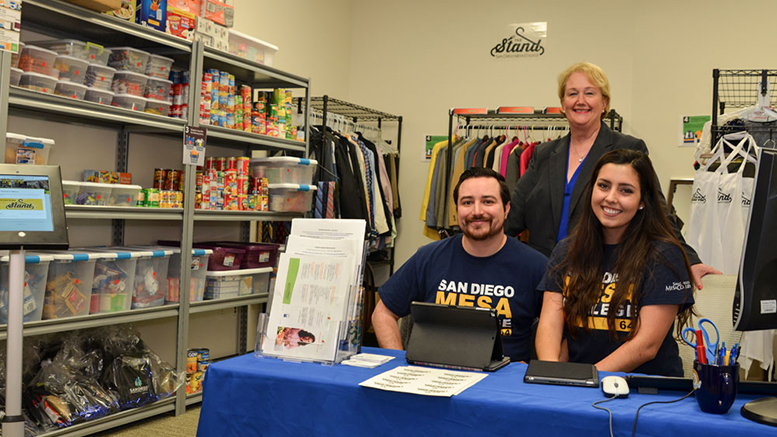In California, half of the community college students have experienced food insecurity within a 30-day period, and 19 percent were homeless during the previous year, according to a new survey by the California Community Colleges Chancellor’s Office and the Hope Center for College, Community and Justice.
Taking action to address the problem, a Community College League of California task force announced the launch of the #RealCollegeCalifornia network, a coalition of colleges to share best practices focused on meeting students’ basic needs. The Hope Center will provide strategic planning support to the network.
“It’s unacceptable for California community college students to be living in their cars or choosing between paying for textbooks or meals. We must redouble our efforts to identify the means to address our students’ basic needs,” said Marvin Martinez, president of the Chief Executive Officers of California Community Colleges and president of East Los Angeles College.
The #RealCollege Survey found significant variations in food insecurity across regions in the state, ranging from 38 percent to 59 percent. Student homelessness varied from 15 percent in some regions to 24 percent in others.
Disparities by race
There were also sizable racial/ethnic disparities. California community college students who identified themselves as African-American or black, American Indian or Alaskan Native reported rates of food insecurity exceeding 60 percent. That is 10 percentage points higher than the rates for Hispanic or Latinx students, and almost 20 percentage points higher than the rates for white or Caucasian students.
Other findings from the survey:
- 52 percent of California community college students agree with this statement: “I worried whether my food would run out before I got money to buy more.”
- 41 percent of students cut the size of meals or skipped meals because they didn’t have enough money to buy food.
- 32 percent faced a rent or mortgage increase that it made it difficult to pay.
- 28 percent didn’t pay the full amount of their utilities.
- 15 percent had to stay overnight temporarily with a relative or friend or had to resort to couch surfing.
“California community college trustees are committed to identifying multi-pronged, targeted approaches to the housing, food and affordability challenges confronting our students,” said Jim Moreno, chair of the league’s board and a trustee at the Coast Community College District.

The farmers market at San Diego Mesa College. (Photo: Mesa College)
The survey highlights the need for substantial changes to the state’s financial aid system for community college students.
To address the problem, the league and the California Community Colleges’ board of governors are urging state lawmakers to support a bill to establish a community college student aid program that would base aid on the total cost of attendance, including housing, transportation and textbooks.
Campus resources
At San Diego Mesa College, food insecurity and homelessness have been rising, so “clearly, there is a need to address the basic needs of our students,” said President Pam Luster, co-chair of the League’s Food & Housing Access Taskforce.
In fall 2017, 15 percent of Mesa students reported being homeless, she said. By fall 2018, 18 percent were homeless, and 62 percent said they were housing insecure. The number of Mesa students who experienced food insecurity rose from 46 percent in fall 2017 to 47 percent fall 2018.
Mesa College provides multiple services, as recommended by its Success, Equity and Transformation Committee, to address students’ needs. It launched a food and clothing pantry in 2017, and runs a monthly farmers market on campus that is operated in conjunction with an organization call Feeding San Diego.
The college plans to expand its commitment to be “the leading college of equity and excellence” by opening a Resource and Advocacy Center on campus to jointly house community and campus resources – and provide emergency funds –to help students meet their basic needs.

